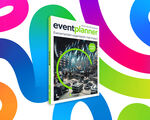When we, as event professionals, are rushed by the planning urgency and pressured by the never-ending list of logistic tasks, we may overlook some of the most interesting meeting design techniques.
We tend to limit ourselves to the already-known formats (such as round-tables or keynote speeches) so that we can avoid the overall complexity of trying to manage new and unfamiliar dynamics. But by playing it safe, we often deprive our attendees from refreshing experiences that may add much more value than the usual same old, same old.
An expert session is one of these meeting design formats that require a bit more attention when planning. However, it can deliver outstanding results for both you and your guests.
But first things first: What is an expert session? As an event practice, expert sessions refer to a 60-minute dynamic that presents a topic (explained by an expert) and engages the entire (usually small) audience in the process of identifying the problem and then finding a solution.
The amazing thing about these expert sessions is the energy and engagement involved. The participants are active co-creators of the narrative and are free to deliver their own expertise. Apart from that, this technique provides massive value in the sense that attendees can learn practical solutions and actually be able to apply them.
These expert sessions are a perfect mix between theory and real practice, making the entire experience extremely meaningful. You could easily plan the dynamics in between or simultaneously with the keynote speeches. Here are some other steps to consider when introducing expert sessions in the event program:
Step 1. Create a space inside the space
To shake up the typical knowledge transfer format a bit, it’s always interesting to experiment with the space itself. A good option for expert sessions is inflatable venues. You can create a special space inside the general space, by inflating, for example, a small (or bigger) room, where your attendees could comfortably isolate themselves from the rest of the environment and focus exclusively on the dynamic.
These break-out rooms are perfect for building a more intimate habitat because they can be installed in minutes and even be illuminated differently from the other rooms in the venue. This “space within a space” will help the attendees change their mindset as they enter a different dynamic and experience an entirely atypical atmosphere than the rest of the event.
Step 2. Set up different interaction techniques
An important prerequisite for expert sessions is to make people engage with the content and each other. There are different interaction tricks you can use. For example, it’s crucial to break up groups at the entrance. When the attendees start entering the room, make sure to split up friends and have them sit at separate tables. This will encourage them to make new acquaintances and interact with people they don’t know.
Another strategy you can use is the so-called pair sharing. During the expert session, you (or the moderator or speaker) will launch a few questions for debating. To get people interacting, have the group break off into pairs and share their opinions with each other.
Step 3. Establish a dynamic script
The great thing about expert sessions is their lively spirit. To transform the activity into a dynamic experience, you’ll have to design a special script that will involve a segmented approach. For example, you could put aside 5 minutes for interacting, then 10 minutes for the moderator, then another 5 minutes for the first block of expert’s talk.
Subsequently, you should dedicate the next 10 minutes to debates and group sharing. Then you can introduce another block for the speaker and another time frame for the moderation, and so on. The idea here is to avoid a boring, monotonous lecture from the speaker. Everyone must participate, and the vibe must be as dynamic as possible.
Step 4. Get people to work with each other
When designing the script, reserve 15 to 20 minutes for the attendees’ participation. This time should include the moderator or speaker posing questions for attendees to brainstorm (the optimal number of questions is three). Then, you must foresee how much time your guests will need to talk to each other and search for solutions or answers to the question. Finally, they must have the possibility to share their solutions or ideas with the group.
Step 5. Mix the theory with practical advice
Although it’s called the expert session, this dynamic shouldn’t be exclusively theory-based. The good thing about this incredible activity is that attendees learn practical recommendations and advice that they can apply immediately.
So make sure, when designing the script, and briefing both the expert and moderator, to reach a balance between the theory and the practical solutions your guests will receive.
Final thoughts
It’s not always easy to introduce new dynamics when planning an event. However, by offering your attendees new types of sessions and interaction opportunities, you’re giving them a completely different experience with the content, and they might actually leave the event with a greater understanding about the discussed topics.
Having all these steps in mind, challenge yourself to set up an expert session for your next event. Good luck!








